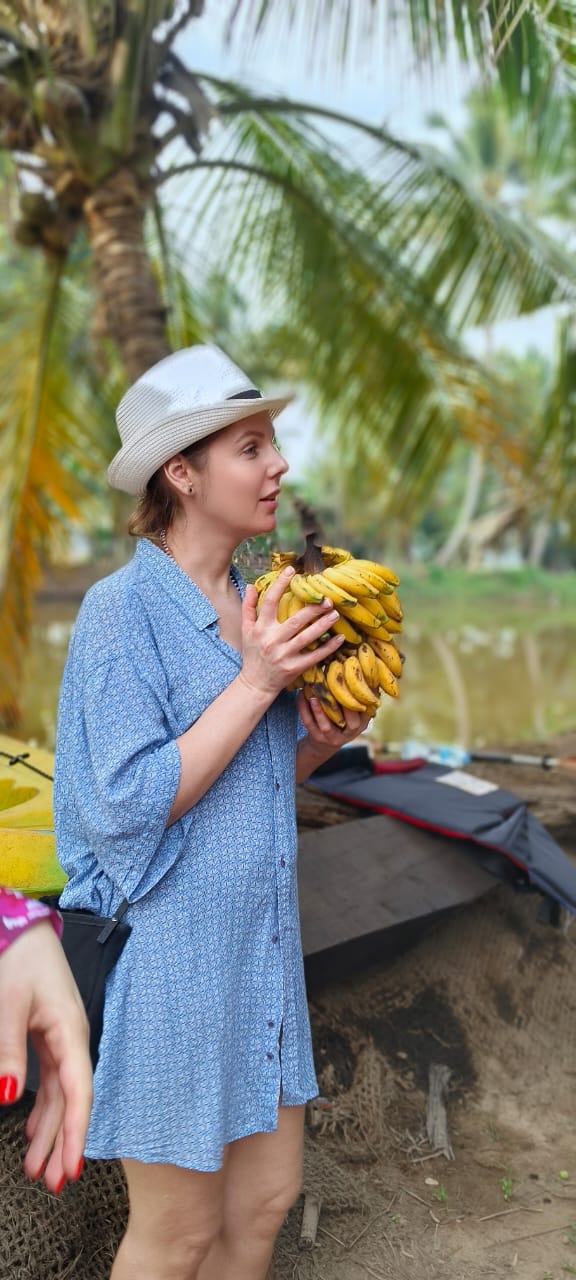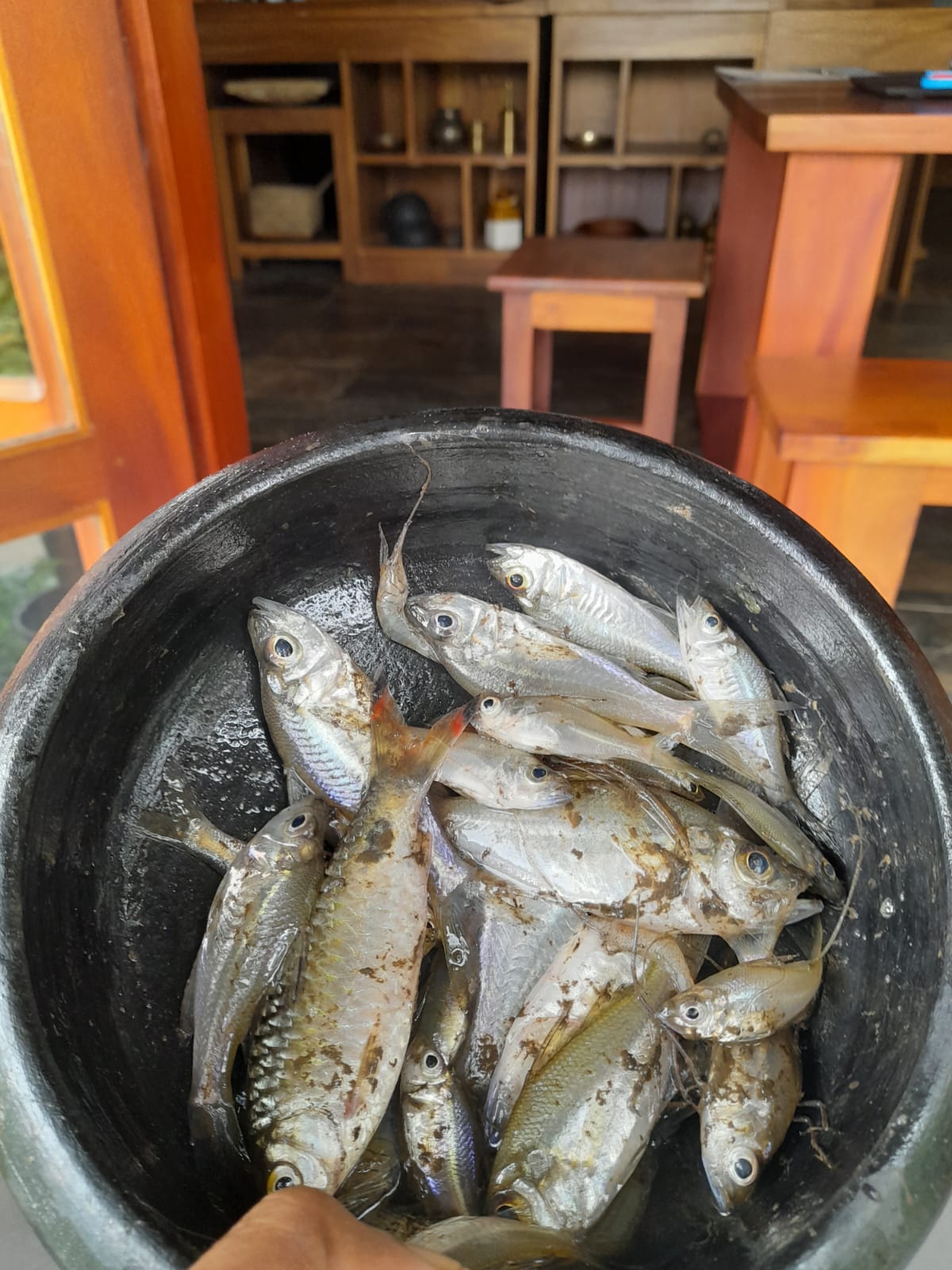How Foraging in Kumarakom’s Backyards Shapes Little Chembaka’s Zero-Carbon Menu
The early hominids relied on hunting and gathering for their food supplies, nourishment, and energy when farming was yet unknown. The hominids collected food plants, fruits, mushrooms, and berries in addition to hunting wild animals and birds. To hunt and gather food, the hominids lived in small groups, but as the local resources ran out, they moved to new areas in quest of new hunting grounds and fruits and plants that they could eat. Foraging was another term for the process of obtaining food for daily requirements. One may argue that since the beginning of human evolution, foraging has been a continuous practice. Many of our hominid predecessors' characteristics can be eliminated, but the foraging impulse and attribute cannot.

An effective method of acquainting ourselves with the natural surroundings is through foraging. We may not be aware of the numerous edible plants, fruits, mushrooms, clams, and even flowers that we encounter. This introduction does a great deal to help us appreciate the abundance of Mother Nature, who created us and continues to provide for us. We have embraced the foraging activities at our boutique experiential villa, Little Chembaka, to give our visitors a profound understanding of our neighborhood's local flora and fauna. We think that the deep connections made during the foraging trip will encourage the sustainable concept of zero-mileage food among the guests staying at our villa.
The Philosophy of Foraging: A Return to Roots
When we go foraging every morning in our Kumarakom, we continue to search for backyard produce such as freshly harvested coconuts, plantains, banana flowers, raw or ripe mangoes, green chillies, shallots, tapioca, and whole spices like green cardamoms, cinnamons, and cloves instead of wild herbs, edible fruits, and leafy greens. We ask our fishermen brothers about the day's fresh catch and whether we may obtain a fish or two from them if we run across them while out on a walk.
While collecting the food ingredients, we catch up on old conversations, carry on with the sharing of any fresh piece of news and keep a check whether our community members are keeping well or not. The leisurely but focused walks with closely observing the local plants, blooming periwinkles, jasmines and hibiscus is a treat to the senses with valuing pauses in life and tribute to the ancient hominid traditions of everyday foraging.

What if we say that our kitchen's daily menu continuously changes based on the freshest harvests and the freshest catch, based on what we acquire from the neighbourhood backyards that day? Yes! It’s true. The best part is that none of the ingredients we use in our cooking actually travel more than a mile, which reduces our carbon footprint.
A Typical Day of Foraging in Kumarakom
We watch the local fruit-bearing trees, a coconut or two, banana plants for a potential banana blossom bloom, Moringa trees for drumsticks, lemon shrubs, and curry leaf plants on our daily morning journey to the farmers' market. Sometimes, when travelling, we see our fishermen skilfully lowering their nets into the backwater canals in the hopes of catching a new fish. If they are fortunate enough to catch a lot of fish, we catch up with them and ask that they hold onto some new catches for us.

On our journey back, we continue to gather the necessary materials after purchasing whatever fresh food we can from the farmers. We occasionally go bartering and trade with our neighbours what we buy at the market. Living sustainably and adhering to zero-kilometer food practices is made possible by foraging, bartering, and sharing what we have.
The Impact of Foraging: Sustainability Beyond the Plate
When we forage in the backyards of Kumarakom for our ingredients at Little Chembaka, it’s not just about finding something fresh to cook. It’s about making the choice that quietly supports the land, the people, and the planet. You see, the moment we step outside our gate and gather what’s growing naturally around us—like wild greens, curry leaves from a neighbour’s tree, mangoes from a backyard grove—we cut out a huge part of the typical food journey.
No trucks or crates or long-distance travel. No plastic wrapping. No cold storage. Just handpicked ingredients, used the same day. That means almost zero carbon footprint. No fuel burnt in transporting ingredients across states or countries. No industrial agriculture that strips the soil and floods it with chemicals. The land remains untouched, the air stays cleaner, and the food, somehow, always tastes more alive.
As we only take what we need and leave the rest, the soil gets to breathe. We don’t disturb its rhythm with ploughs or pesticides. Native plants stay rooted and strong. Their natural cycles of growth continue, which means we’re not just feeding ourselves—we’re protecting biodiversity, too. Foraging also keeps us connected.
Sometimes, the curry leaves come from the chechi who lives across the canal. The raw mangoes might be from an uncle’s tree down the lane. A guest joins us to collect banana stems from the backyard. These small acts of gathering bring people together. They open up conversations, share knowledge, and bring income back into local hands when we pay for or barter these ingredients. In a world where everything moves fast, and food often comes in boxes, foraging reminds us to slow down. It teaches us to look around and see what the land has to offer—before we reach for what’s mass-produced.
On the Plate: How Foraged Ingredients Transform the Menu
A few months ago, one of our guests commented that the duck curry made with a coconut base was exceptionally flavorful. She had never experienced such delectable duck meat anywhere else. We had exchanged the free-range duck from our neighboring farmer, Chettan, for some coconut oil and rice flour from our kitchen. The flavor and aroma conveyed the warmth of community and brotherhood.
We are uncertain why the dishes prepared with foraged ingredients consistently taste superior. Perhaps the resources are cultivated with love and care in backyard farms, which are devoid of monocultures and commercial farming practices. Even the sustainable banana plates, crafted from the broad and large banana leaves gathered from our gardens, impart a unique flavor to the meals served upon them. The difference is immediately noticeable as soon as you begin to eat. This distinction arises from the warmth and love inherent in sustainable food collection practices.
Challenges and Joys of a Foraged Kitchen
In our cooking studio, Wonderwerk Kitchen, every meal begins with a walk. The walk to the farmers’ market along the Kumarakom canals where the fishermen are waiting to catch some fishes, sometimes in our backyard, sometimes down a neighbor’s house, sometimes to the local rice and oil mill. But this isn’t just about gathering ingredients. It’s about observing the season, trusting the soil, and listening to what nature has to offer that day.

The picture is not always rosy with foraging because there are challenges. You don’t always find what you set out looking for. Rain might wash away the tender greens you had planned a dish around. A sudden pest might mean the curry leaves need a break. There is no fixed menu—only an open mind and willing hands. It takes time, patience, and faith.
But the joys are far richer than the inconveniences. The joy of finding plump jackfruit pods when you least expect, or a banana flower clinging to a tall banana plant, or the exact tang of a mango you remember from childhood. Cooking with foraged ingredients invites creativity. It demands presence. As one of our home chefs puts it, “This kind of cooking isn’t about control, it’s about connection. The kitchen slows down, and something inside us slows down too.” That’s the heart of our kitchen. Simple traditional Kerala food, made with attention, shaped by the land around us.
Lastly, we would like to describe that our boutique villa by the Kerala Backwaters of Kumarakom, Little Chembaka, isn't just a place where you can drop in and rest. We invite you to experience a way of life where food is not rushed. It is harvested with gratitude, collected through slow walks full of excitement and thrills, and cooked with love, warmth, and care. We live by the notion of sustainability every single day and celebrate it in our daily lives. We promise to live by the principles of sustainability, of which foraging is just one.
